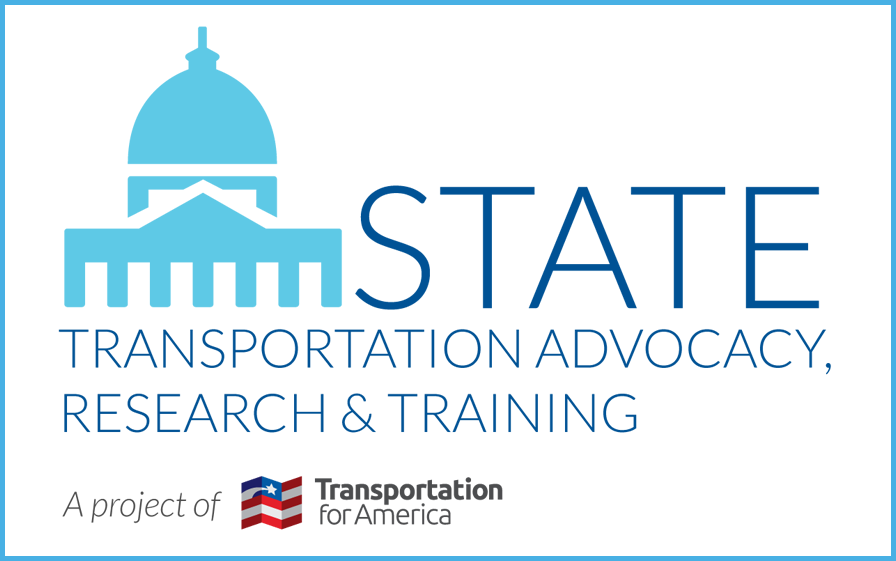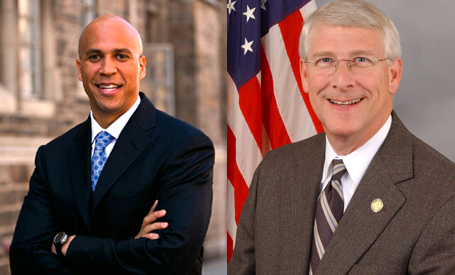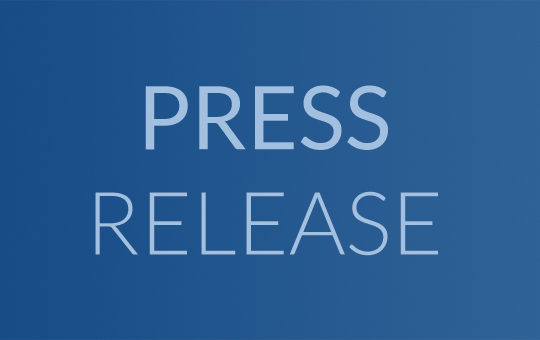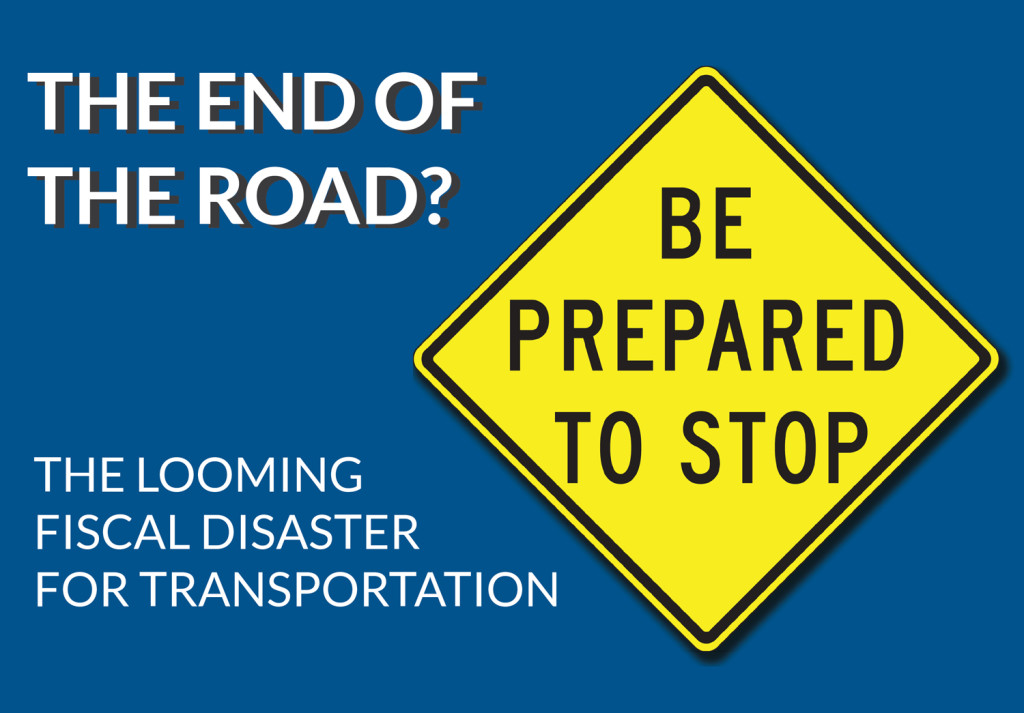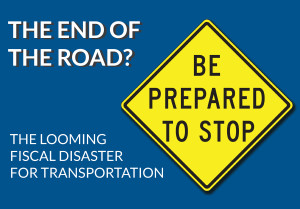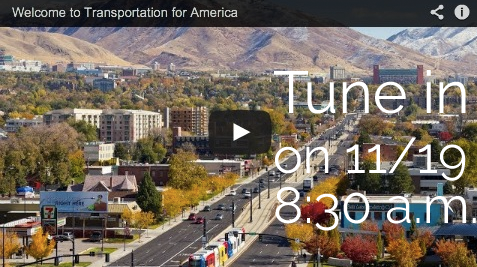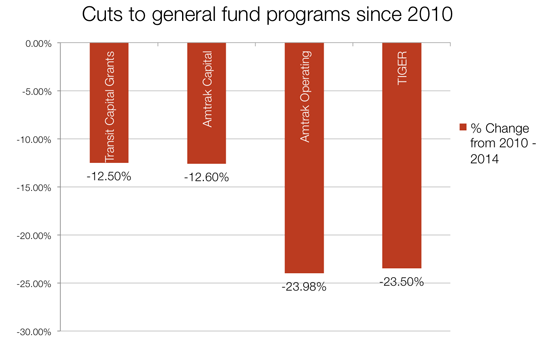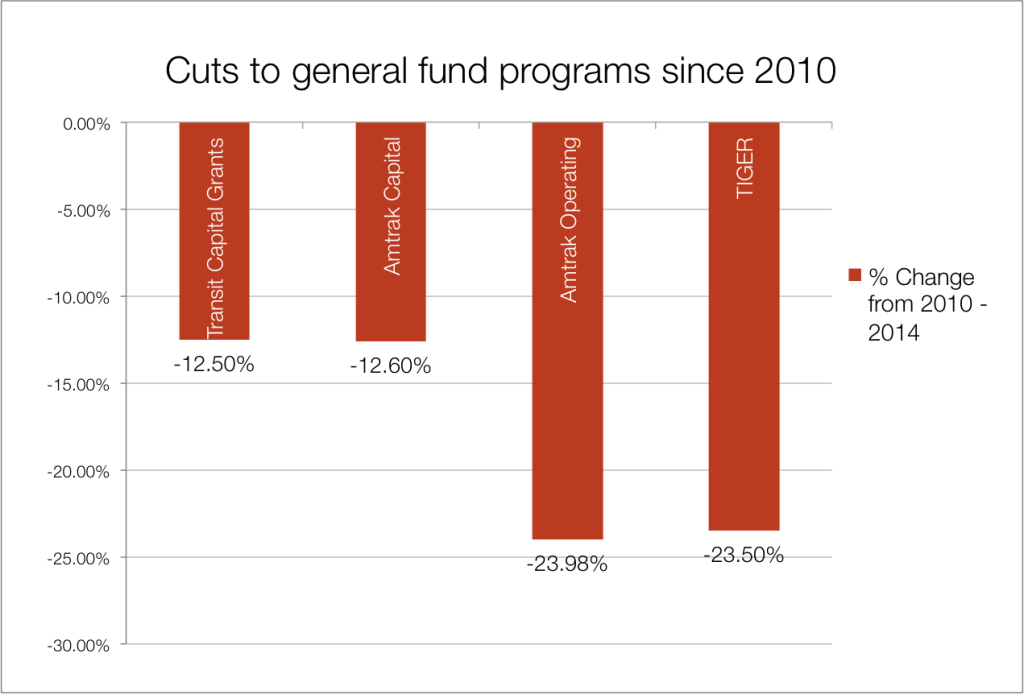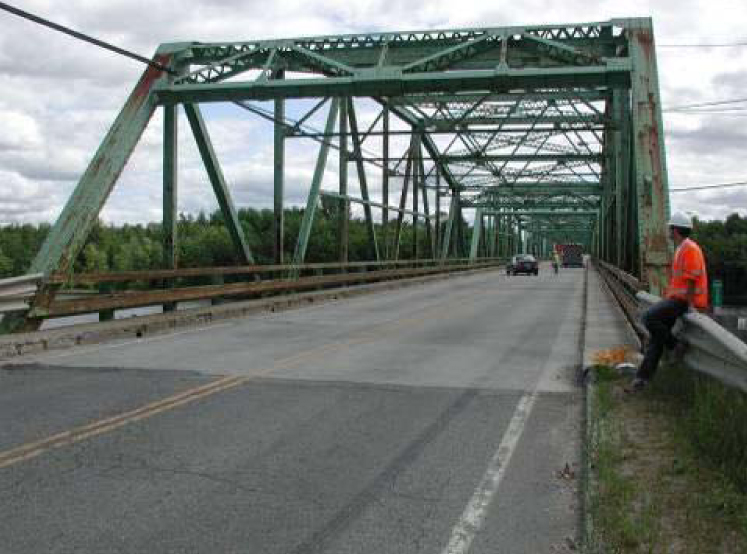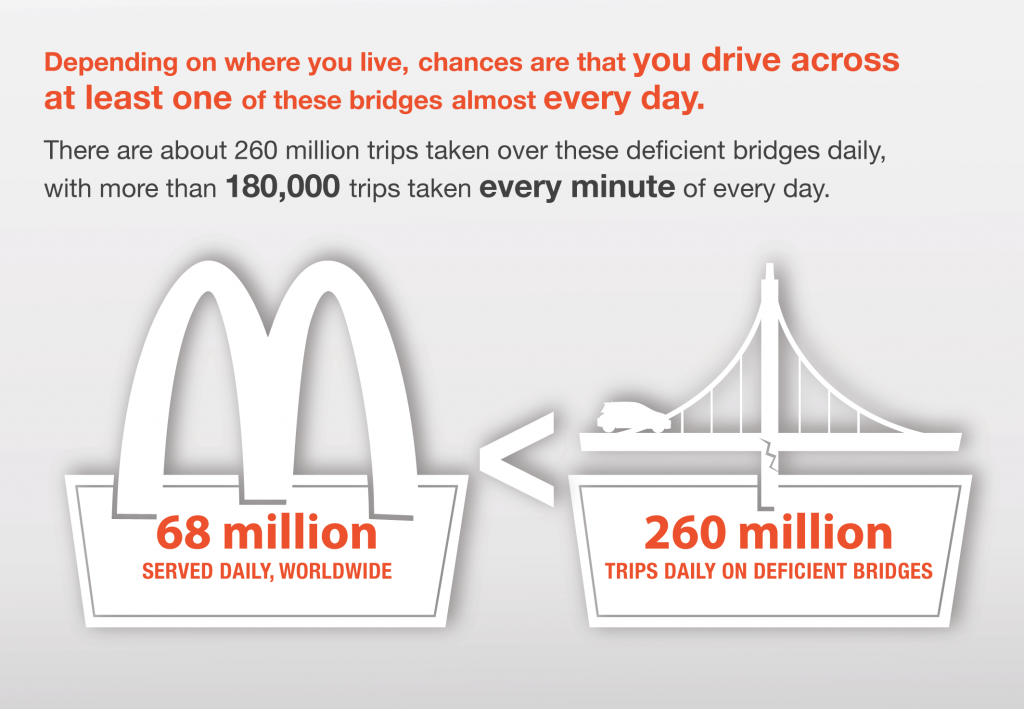One in 9 bridges are “structurally deficient” as the average age nears 50 years. And more troubled bridges in our big cities than McDonald’s restaurants nationwide
WASHINGTON, D.C. – One in nine of the bridges and overpasses American drivers cross each day is rated in poor enough condition that some could become dangerous or be closed without near-term repair, according to an updated analysis of federal data released today by Transportation for America.
Nearly 67,000 of the nation’s 605,000 bridges are rated “structurally deficient” and are in need of substantial repair or replacement, according to bridge inspections analyzed in The Fix We’re In For: The State of the Nation’s Bridges 2013. Nearly 8,000 are both structurally deficient and “fracture critical”, meaning they are designed with no redundancy in their key structural components, so that if one fails the bridge could collapse. The Federal Highway Administration estimates that the backlog of troubled bridges would cost $76 billion to eliminate.
The report ranks states and the District of Columbia in terms of the overall condition of the their bridges, with one having the largest share of deficient bridges, 51 the lowest. Twenty-one states have a higher percentage of deficient bridges than the national average of 11 percent. The five states with the worst bridge conditions have a share over 20 percent: Pennsylvania has the largest share of deteriorating bridges (24.5%), followed by Oklahoma (22.0%), Iowa (21.7%), Rhode Island (21.6%), and South Dakota (20.3%).
At the other end of the spectrum, five states have less than 5 percent of their bridges rated structurally deficient: Nevada and Florida lead the rankings with 2.2%, followed by Texas (2.6%), Arizona (3.2%), and Utah (4.3%).
View the report, full data, interactive map and infographic here.
“With the collapse of the I-5 bridge in Washington state last month, coming just six years after an interstate collapse in Minnesota, Americans are acutely aware of the critical need to invest in our bridges as our system shows its age,” said James Corless, director of Transportation for America. “Today, though, there more deficient bridges in our 100 largest metropolitan areas than there are McDonald’s locations nationwide.” Put another way, laid end to end, all the deficient bridges would span from Washington, DC to Denver, Colorado or from Tijuana, Mexico to Seattle — more than 1500 miles.
The need is growing rapidly, the report notes: While most bridges are designed to last 50 years before major overhaul or replacement, American bridges average 43 years old. Age is a major factor in bridge conditions. Roughly half of the structurally deficient bridges are 65 or older. Today there are nearly 107,000 bridges 65 or older, and in just 10 years, one in four will be over 65.
Congress has repeatedly declared the condition and safety of our bridges to be of national significance. However, the money to fix them is getting harder to come by with declining gas tax revenues and a fiscal squeeze at all levels of government. At the same time, Congress made the prospects for bridges even more uncertain last year by eliminating a dedicated fund for them in its update of the federal transportation program. The new law also reduces access to funds for 90 percent of structurally deficient bridges, most of which are owned by cash-strapped local governments.
“Unfortunately, the changes Congress made last year left the health and safety of our bridges to compete with every other priority,” Corless said. “When it updates the law again next year, Congress should ensure that we have both adequate funding and accountability for fixing all our bridges, regardless of which level of government owns them.”
Some in Congress have recognized the issues and are moving to address them, among them U.S. Rep. Nick J. Rahall (D-WV), the ranking member of the House Transportation and Infrastructure Committee. “Congress simply cannot keep hitting the snooze button when it comes to needed investment in our Nation’s bridges or think that these aging structures can be rehabilitated with rhetoric,” Rahall said. “That is why I am introducing legislation that provides needed federal funding to start to address the startling backlog of structural deficient and functional obsolete bridges.”
The funding uncertainty comes as the rate of bridge repair has slowed dramatically in recent years.
Investments from the stimulus and ongoing transportation programs helped reduce the share of deficient bridges from 11.5 percent to 11 percent since our last report. But the overall repair rate has dropped significantly over the last 20 years. From 1992-1996 the number of deficient bridges declined by 17,000. However, from 2008-2012 the number dropped by only 4,966 – more than three times slower.
The authors suggest several recommendations to ensure that there is both funding for safe and well-maintained bridges and accountability for getting the job done, including:
- Increase investment: Current spending levels are precarious and inadequate. In order to bring our rapidly aging infrastructure up to a state of good repair, Congress should raise new, dedicated revenues for surface transportation programs, including bridge repair.
- Restore funding for the 180,000-plus bridges that lost eligibility under the new federal transportation program: Under MAP-21, all of the money previously set aside for bridge repair was rolled into the new National Highway Performance Program, and only 10 percent of deficient bridges – and 23 percent of all bridges – are eligible. Congress must restore funding access for all previously eligible bridges.
- Prioritize Repair: Congress should require states to set aside a share of their NHPP funds for bridge repair unless the state’s bridges are certified as being in a state of good repair.
View the report, full data, interactive map and infographic here.









